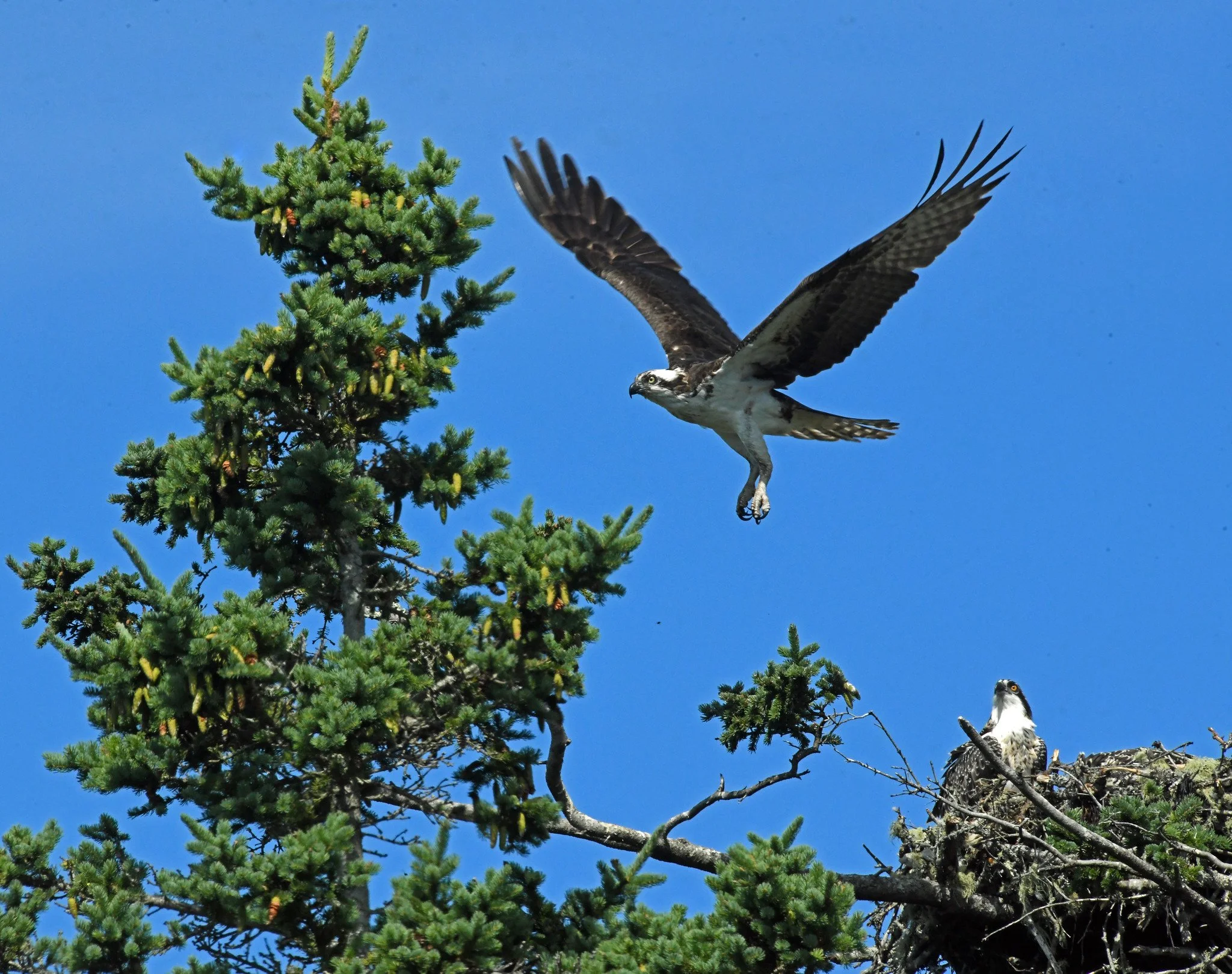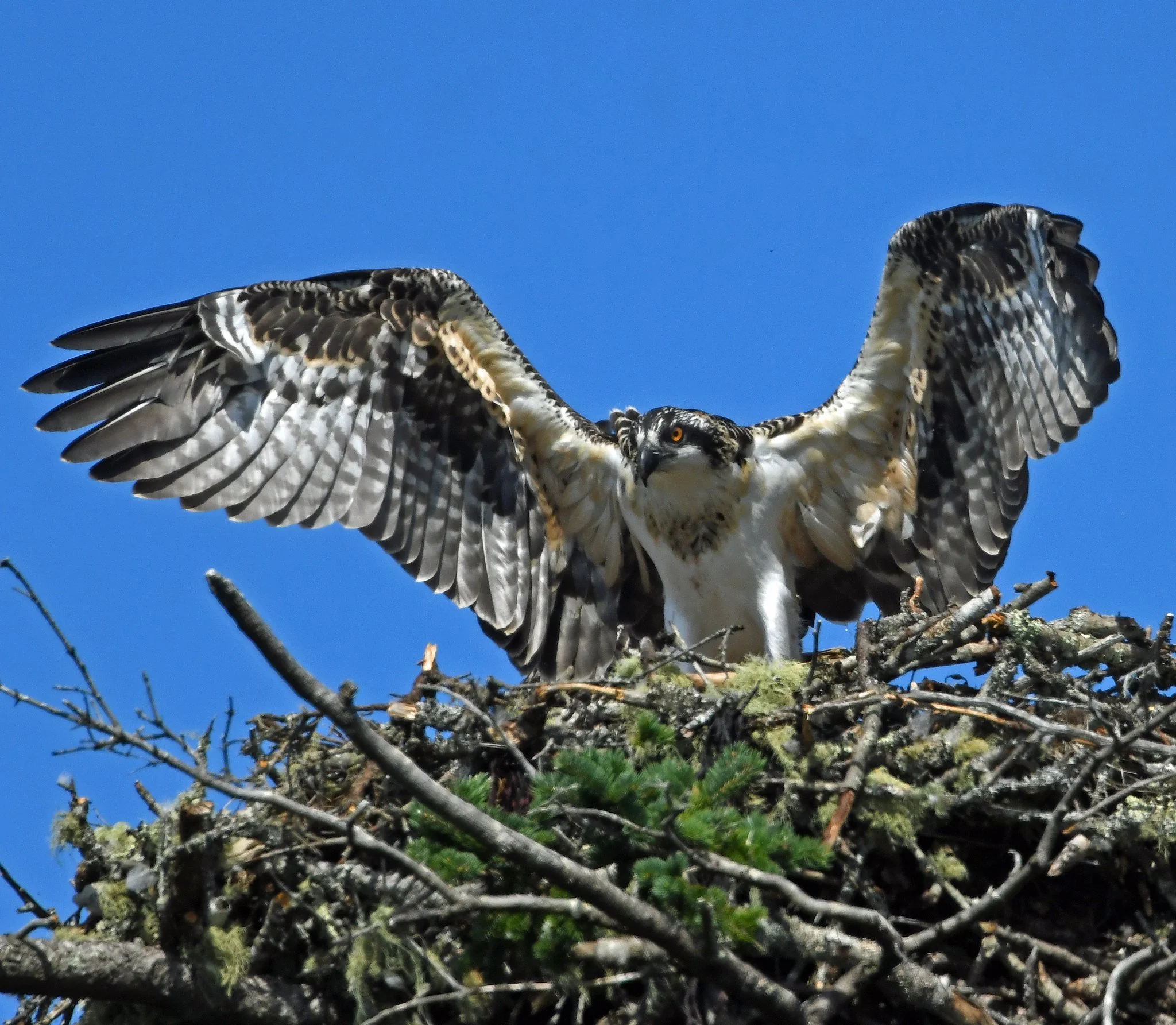All is well. For those who have been following these reports, here you see Harriet taking a break from her nest-guarding duties on Wednesday; that’s June looking on:
That left our symbolically adopted 2022 Osprey nestlings alone to wait for her return. From left to right, there is June (youngest), David (oldest), and Ricky (the energetic tweener):
Here’s a closeup of David:
Soon, the three nestlings will be taking short test flights. David and Ricky are now regularly flapping their wings in the breezes that come by their 100-foot-high penthouse over Great Cove. Here’s David flapping away; note his wings, they’re part of the reason why ospreys are unique:
Although ospreys are considered to be hawks (often called “fish hawks”), they’re special hawks. Other hawks are considered to be part of one large family (Accipitridae) that includes numerous species of harriers, kites, and eagles. Ospreys are in a family (Pandionidae) consisting only of their one species.
Ospreys are designed to fish and their wings are part of several special adaptations to make them master fishers. They use their almost eagle-sized wings like helicopter blades to hover while targeting their underwater prey. Unlike those of eagles, the long osprey wings are narrow with a distinctive “crook” (gull-like bend) for extra maneuverability.
Adult osprey wing spans are reported to average 57 inches for males and 67 inches (5 ½ + feet) for the larger females. Yet, their bodies are trim for speed. (Images taken in Brooklin, Maine, on July 27, 2022.)



